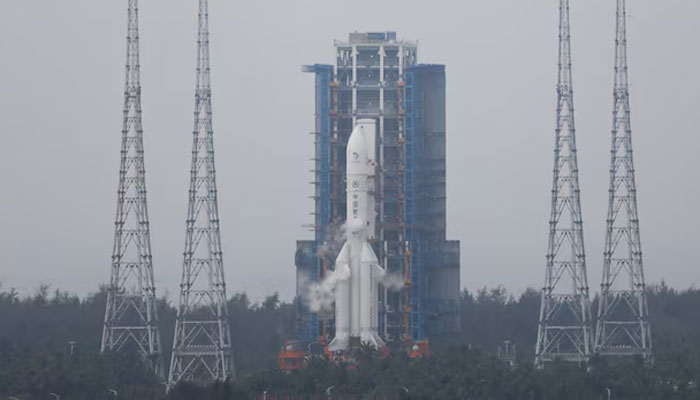China's Chang'e 6 probe returns to Earth with first lunar far side samples
Scientists believe samples could provide valuable research for understanding moon’s formation and evolution
June 25, 2024

China’s Chang'e 6 lunar probe returned to Earth Tuesday, carrying samples from the far side of the moon, successfully completing its historic 53-day mission.
The mission "successfully landed" in a designated zone in China's northern Inner Mongolia region just after 2pm local time, CNN reported citing Chinese broadcaster CCTV.
The missin marked a major step forward for the country's ambitious space program.
A livestream showed the module touching down via parachute to a round of applause in the mission control room.
"The Chang'e-6 lunar exploration mission has been a complete success," said Zhang Kejian, head of the China National Space Administration (CNSA), from the control room.
The probe returned with soil and rocks from the moon's side that faces away from Earth, a region with less smoothed features as a result of ancient lava flows than the near side, AFP reported.
Scientists believe that the probe could provide valuable research for understanding the moon’s formation and evolution over time.
Chang'e-6 blasted off from a space centre on the island province of Hainan on May 3 and descended into the moon's immense South Pole-Aitken Basin almost exactly a month later.
It used a drill and robotic arm to scoop up samples, snapped some shots of the pockmarked surface and planted a Chinese flag made from basalt in the grey soil.
The probe made the first ever successful launch from the far side on June 4. The Chinese news agency Xinhua called it "an unprecedented feat in human lunar exploration history".









